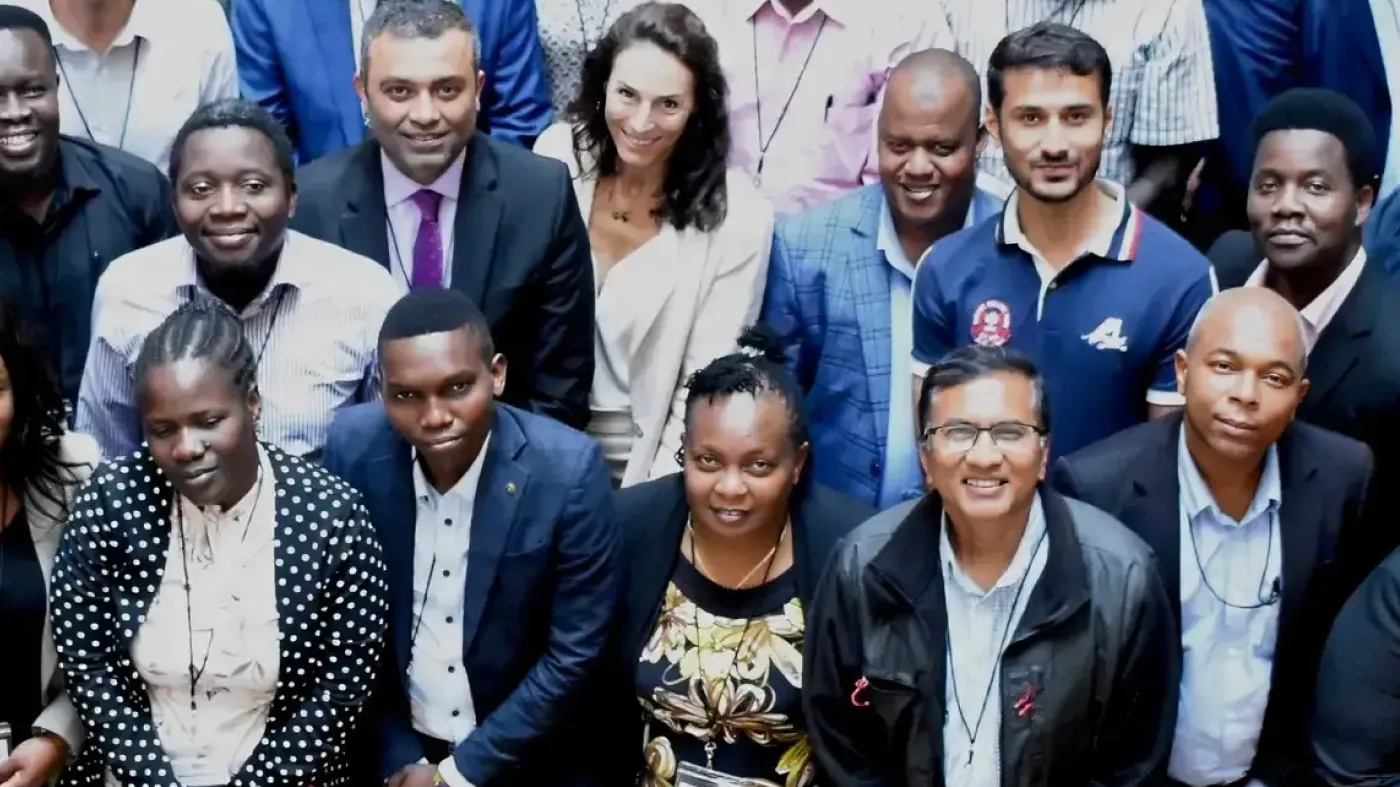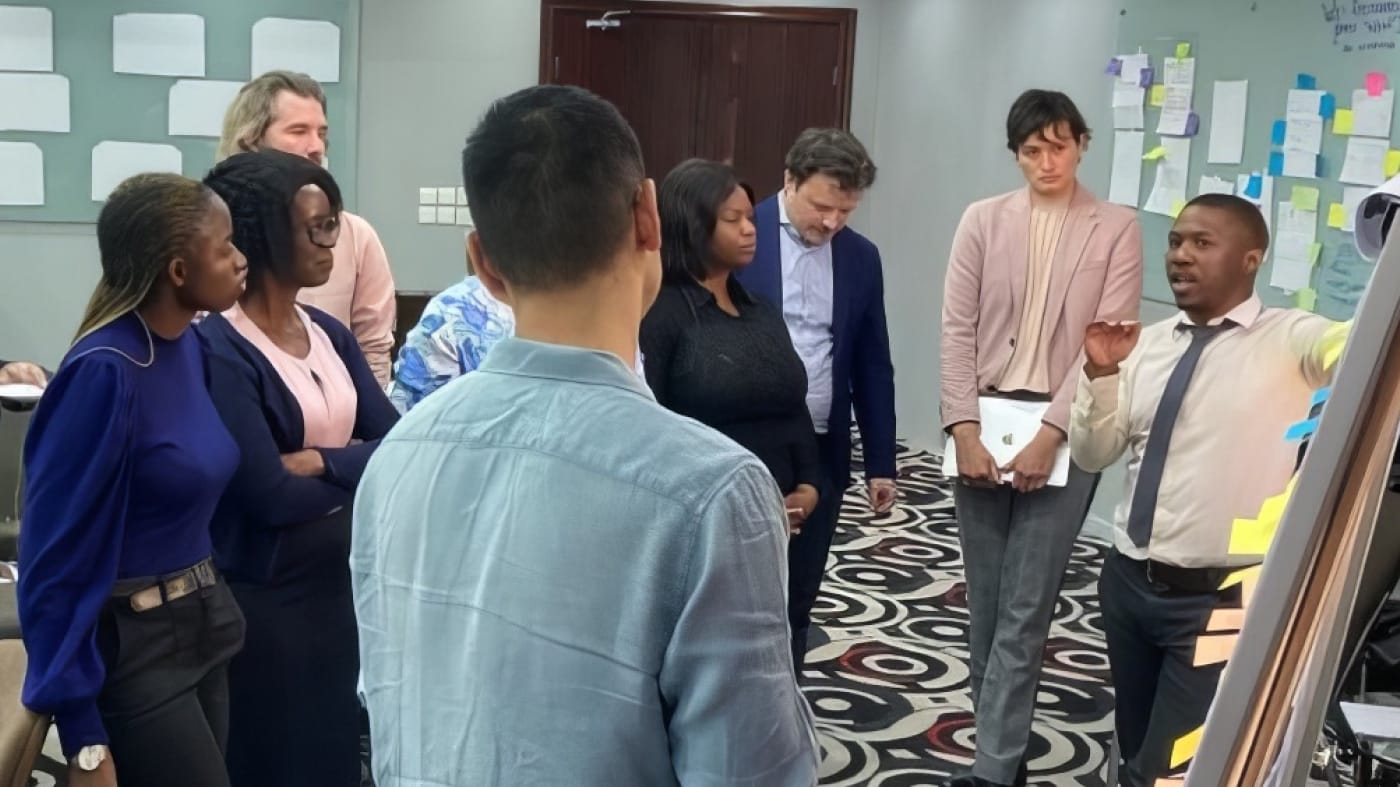Download All Country Data
Magazine Wharf is a bustling, densely packed neighborhood on the coast of Freetown, Sierra Leone’s capital city. It is beautiful, vibrant, and hectic. Families live tightly, side-by-side, and homes sometimes house dozens of people. The streets of Magazine, as it is affectionately called, are narrow, lined with kids playing, moms cooking, dads watching, people strolling by.
In June of 2015, Magazine’s closeness became a threat. The neighborhood experienced a “cluster” of Ebola cases, and the virus could have easily spread further in such tight quarters. After months of trying to keep the outbreak under control in the country’s more rural areas, the Ministry of Health and Sanitation (MOHS) and its partners, including the U.S. Centers for Disease Control and Prevention (CDC), feared the worst as the virus hit crowded Freetown communities like Magazine Wharf.
With panic ensuing and cases on the rise, the primary objectives of the MOHS and its partners were to ensure that community members knew the signs and symptoms of Ebola and were properly tested and referred to a hospital if sick, with those potentially exposed receiving follow-up visits. Fatmata Bangura and many other volunteer Community Health Workers (CHW) worked as surveillance officers, using their intimate knowledge of the communities where they had lived and worked for years to share important information and identify potential cases.
Fatmata helped her neighbors understand what illness from Ebola looked like and why seeking care early could help patients—and their families and neighbors—stay safe. She promoted hand washing and explained to bereaved families why relying on burial teams was safer than burying deceased family members themselves. She visited exposed households to see if anyone was newly sick, alerting local health teams if she identified new illnesses. For many of those she reached, Fatmata was their first point of contact with the health system, and her role was key: if a patient, or a patient’s family, didn’t trust Fatmata or the information that she was giving them, they might lie about their symptoms, hide a sick family member, or refuse further care.
“If she messed up that first step, and if she missed somebody, it could be a true catastrophe,” says John Redd, a doctor and public health specialist who helped to coordinate the response in Magazine. Things were difficult—Fatmata notes that there was only one ambulance available for the entire Freetown area, totaling 1 million people, and corpses lay on the street sometimes for up to eight days. Still, she excelled. “She was adept at both getting the reporting done, the logistics of getting someone into the system and getting them tested, and the human interaction of talking to people at what was a very scary time,” says Redd.
Through efforts like Fatmata’s, patients were identified and given care, and the outbreak waned within Magazine, with the neighborhood’s last reported case in August 2015, two months after the initial cluster occurred. This represented the beginning of the end of the country’s outbreak, with cases significantly decreasing through the end of the year. The country was officially declared Ebola-free by the World Health Organization (WHO) on March 17, 2016.
But this was the beginning of a new trajectory for Fatmata. Impressed by her work, the CDC and MOHS offered her a spot in the Field Epidemiology Training Program (FETP). She began with a three-month course focused on community surveillance and disease reporting. She excelled again, and is now enrolled in a 10-month FETP course, focused on maternal health reporting. (Sierra Leone has one of the highest rates of maternal mortality in the world, a statistic made worse during and immediately after Ebola, as many women were afraid to visit health facilities.)
Using the skills she originally acquired as a community health worker, Fatmata is now a District Surveillance Officer (DSO), a paid MOHS employee supporting disease detection and reporting. She’s learned how to investigate cases, analyze basic epidemiological data, and report to health authorities as needed. “She’s now qualified to do field outbreak investigations, for anything,” says Redd. “She represents the future in Sierra Leone. There is now true capacity, on site.”
Fatmata’s progression from Community Health Worker to District Surveillance Officer mirrors that of her community, and country. In the wake of the outbreak, Sierra Leone has taken steps to improve the country’s disease response. The first step has been to ensure that events can be quickly and accurately reported, as they were during the Magazine Wharf Cluster, in order to provoke a fast and appropriate response.
The country’s Infectious Disease Response System (IDSR), an internationally recognized reporting tool used to track key diseases, was barely functional when Ebola hit. Health workers had not been trained to identify potential outbreaks, and there was no regular communication system to ensure that information was conveyed from health posts in the community to MOHS headquarters.
Now, health workers across the country, including Fatmata’s former Community Health Worker colleagues, have been trained in reporting on key diseases, and each of the country’s nearly 200 health facilities are expected to submit weekly reports detailing anything they find, with MOHS headquarters routinely reviewing the compiled reports to determining a response. The WHO says that since the end of Ebola, IDSR helped to identify potential cholera and measles cases, and is also helping to better track maternal deaths, which are chronically under-reported.
The country’s ability to respond to events has also improved. An Emergency Operations Center (EOC), initially created and used throughout the Ebola outbreak, can now kick into action anytime there’s a major event, such as the August 2017 landslide in Freetown’s hilly west end which killed hundreds of people. A rapid response was needed to find and safely bury victims, alert families of the deaths, and offer financial compensation and housing to those left homeless. The EOC was also used to find, and if needed respond to, cases of cholera, a major risk during any rainy season but made even more serious due to the large number of people who were homeless with no access to toilet facilities. (The country’s last cholera outbreak, in 2012, infected over 25,000 people and killed nearly 400).
Using a blueprint created during Ebola, the MOHS immediately organized a committee made up of representatives from government and partner organizations to ensure that CHWs, community members, and health workers knew the signs and symptoms of illness and to immediately report any potential cases to their local health center. Through IDSR, this information was reported upwards. Within days, hundreds of potential cholera cases were identified and tested (none proved positive). An oral cholera vaccination campaign simultaneously took place across Freetown’s most vulnerable neighborhoods.
“Within this natural disaster, I saw the health system having grown dramatically,” says Sara Hersey*, the former country director of CDC Sierra Leone, who oversaw both CDC’s Ebola response and support for recovery from the mudslide. “There is a better understanding of what a public health emergency is and how it should be managed.”
And Magazine Wharf has also changed. Hersey notes that in the community there is now “a public health cadre, like Fatmata, who understand risk, understand what’s at risk, understand what to do when there’s a public health emergency, and understand how to take care of themselves.” Fatmata herself notes that the number of CHWs engaged in Magazine Wharf has grown.
In the neighborhood’s busy streets, and across the streets of Freetown and Sierra Leone, there’s talk that it’s not a matter of if, but when, Ebola will come back. But from the ground up—starting with communities like Magazine—the country, its health workers, and its citizens are becoming better able to find, stop, and prevent deadly health threats.
*Sara Hersey is now a senior technical officer at Resolve to Save Lives.
Photo Credit: John T. Redd, MD, MPH, FACP, CAPT, USPHS, Centers for Disease Control and Prevention






